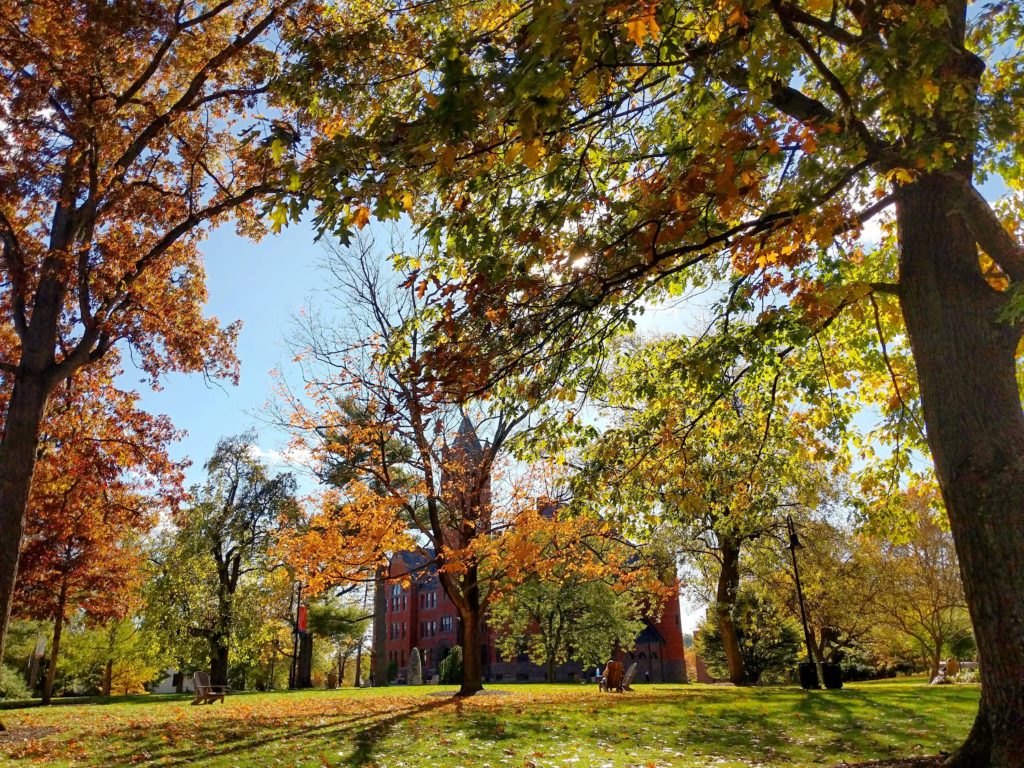College Launches New Strategic Plan, Addresses Financial Uncertainty and Marketability
By Nicole DeJacimo, Content Producer
Last week, President Bob Iuliano and Assistant Vice President of College Life Darrien Davenport outlined the beginning stages of the new strategic plan called Living Our Promise in an online seminar. The current plan, Unfinished Work, is set to expire at the end of this academic year.
Throughout the seminar, Iuliano circled back to four pillars and underscored their significance in the new strategic plan. The four pillars are as follows:
- A rigorous liberal arts and sciences education.
- Teaching students how to have an impact.
- Civic knowledge and engagement
- Diversity, inclusion, and belonging
- Ethical and effective leadership
- Experiential learning.
- Integration
The Strategic Planning committees will focus on reworking the curriculum and co-curricular expectations and opportunities to best accommodate the changing needs of the current and future classes at Gettysburg. This process was designed in order to help graduating Gettysburgians succeed after college. The focus on diversity and inclusion will continue to be a priority and was also a focus of the strategic plan implemented by former President Janet Morgan Riggs.
Iuliano hopes to increase the marketability of Gettysburg College and implement other efforts in order to improve the College’s financial situation. Currently, eighty percent of the college’s funding comes from the room, board, and tuition fees. With the combination of smaller-than-planned class size and financial concerns stemming from the pandemic, Gettysburg is facing new challenges. “No healthy organization can sustain this kind of deficit,” Iuliano said.
Part of the solution will be ensuring that Gettysburg remains competitive as an institution for college applicants. Iuliano suggested that the smaller class sizes would keep Gettysburg College as a nationally known and sought after liberal arts college that attracts students of all nationalities, races, and financial backgrounds.
“We are looking to find ways to be less tuition-dependent,” Iuliano said. “The question is, how do we build new sources of revenue?”
One possibility mentioned was initiating continuing education courses that are part of licensing and certificate programs for people seeking an alternate education to an undergraduate degree. Another is to create a new fundraising campaign.
At the beginning of the question and answer session, administrators urged viewers to ask questions about the strategic plan. They indicated that the spring semester will be discussed at a later date, but they did provide more details about the January Term option.
According to the college, the optional January Term will be a two-week program that focuses on leadership and career skills outside of the traditional curriculum to help students better understand themselves in and out of the classroom. Iuliano hopes this will be an opportunity to build on some of the college’s proposed commitments in the new strategic plan. It will also be a way for administrators to test out some of the programs that they hope to implement in a more systematic way in the future.
The president ended the session by expressing gratitude. “This is not a community that is passive,” Iuliano said. He expressed that, since the beginning of his term, he has come to understand “just how willing and committed people are to improving our institution.”

